Updated: 25-Feb-2019
Frank H. Harriman was the founder of Harriman Motor Works, in Glastonbury, CT. and started manufacturing aviation engines in 1909.
-The 30 HP was a four-cylinder in line, the same as the 50-60 HP from the following year.
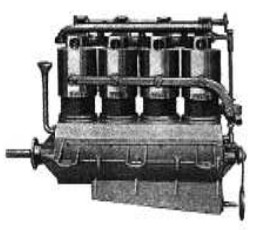
“Harriman, 50-60 HP”
-The Harriman 30 and 50-60 hp engines gave their power at 1,400 rpm, and were the only ones of their kind that were offered with an Atwater-Kent battery ignition system.
-They were also one of the first motors that changed the red copper linings for steel ones welded to the autogenous on the engine itself, thus avoiding possible leaks.
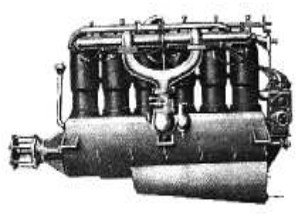
“Harriman, 100 HP”
-It assists the exhaust through ports at the end of the power stroke.
From Appendix 6: Although Harriman made aviation engines, for this one located at the New England Air Museum, it seems doubtful that it was used in some aerodyne. Mainly because of its heavy flywheel.
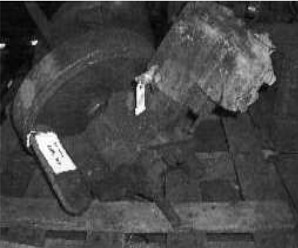
“Harriman engine at the NEAM”
-Frank H. Harriman founded Harriman Motors in Hartford moving later, in 1907, to South Glastonbury. He built air and marine engines and the one in the photo looks more like one of the latter.
-This particular engine is called "Little Gem". He also made four- and six-cylinder upright in-line engines from 30 to 100 hp.
-Harriman is considered a pioneer.
From Appendix 9: We have seen a four-cylinder Harriman engine, whose photo we show below to complement the information in the main text.
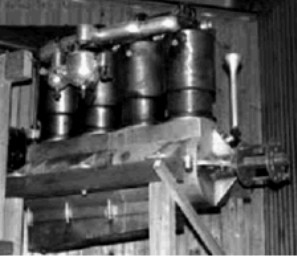
“Harriman 4-cylinder engine”
From Appendix 10: This is Harriman Motor Works Inc. from Connecticut, which, by 1911, began to offer four-cylinder, four-stroke engines in two powers. It was owned by Harriman Fitzpatrick.
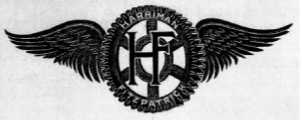
Harriman logo”

“Harriman 30 HP engine”

"Harriman 30 HP engine right side view"
-We are interested in appreciating the simplicity of the camshaft of this engine, that each one drives the two valves: the intake and the exhaust one.
-And we also show a photograph of the 4-cylinder, 50 hp engine.

“The 50 HP engine with a bigger oil casing”
-From the photographs we can see that, in addition to having an exhaust valve, there are also ports in the lower part of the cylinders as a possible aid to empty the cylinders.

"See the simplicity of the camshaft"
Engines of HARRIMAN
Model: 4 cyl. inline, 30 HP
Arquitecture: 4-cylinder In-line
Cooling:
Total Displacement:
Bore / Stroke:
Power: 30 HP @ 1400 rpm
Weight:

"Harriman 30 HP engine right side view"
Model: 4 cyl. inline, 50-60 HP
Arquitecture: 4-cylinder In-line
Cooling:
Total Displacement:
Bore / Stroke:
Power: 50 HP @ 1400 rpm
Weight:

"Harriman 50 HP engine left side view"
Model: 6 cyl. inline, 100 HP
Arquitecture: 6-cylinder In-line
Cooling:
Total Displacement:
Bore / Stroke:
Power: 100 HP
Weight:


